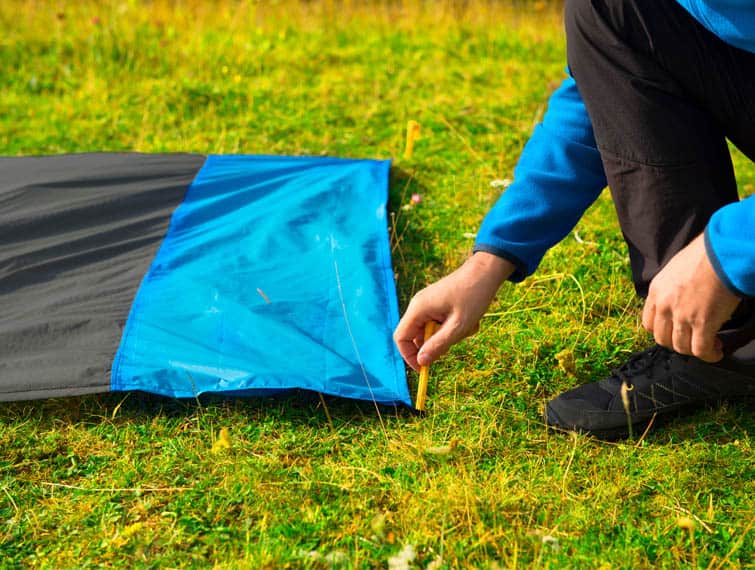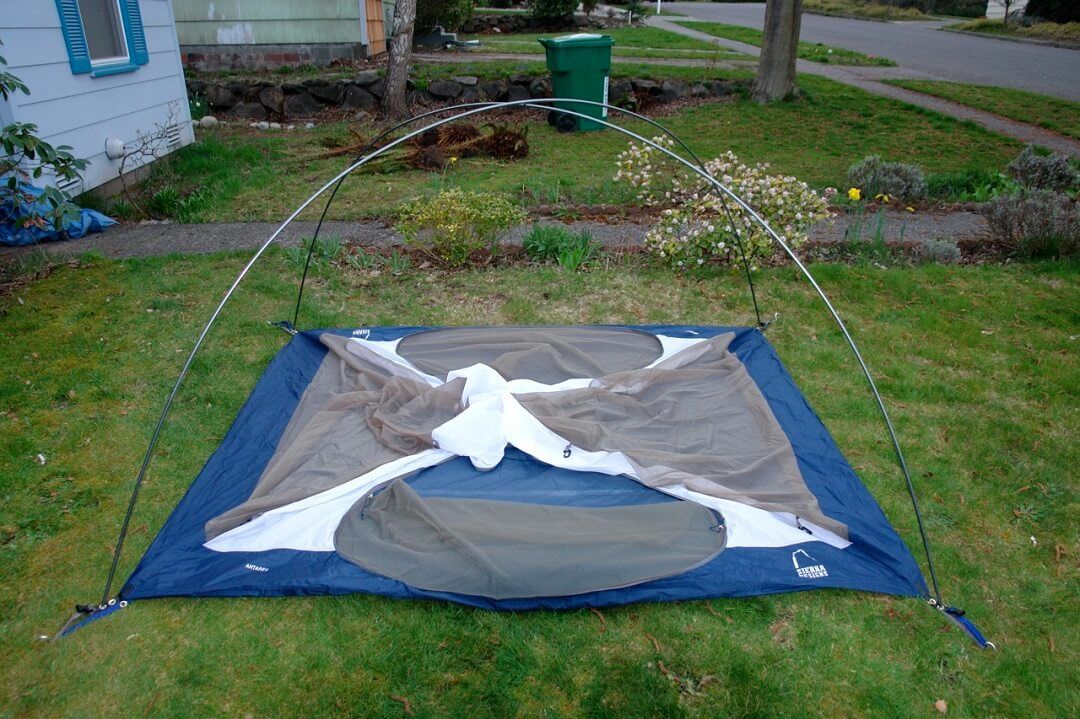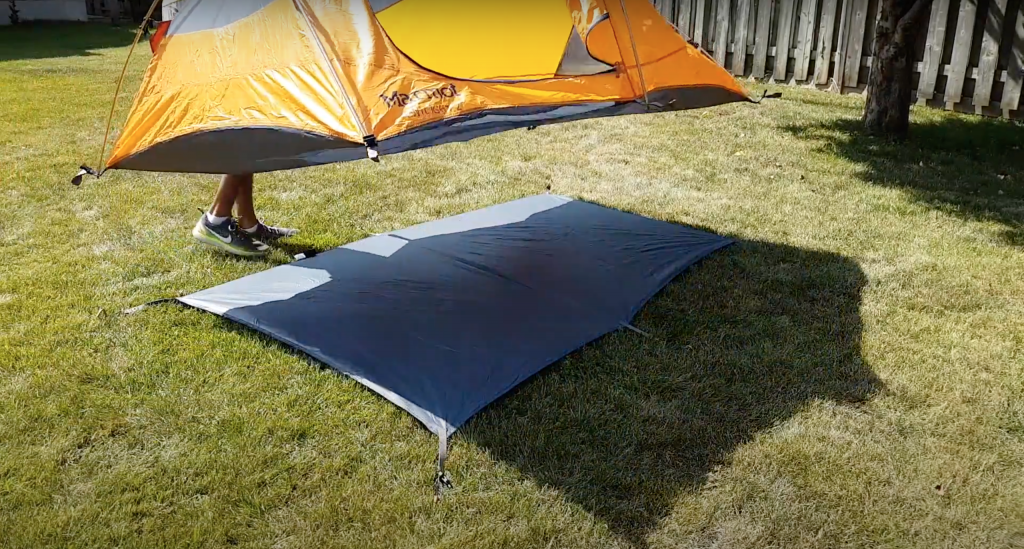I. Introduction to Tent Footprints

A. Overview of Tent Footprints and their Importance
Tent footprints are protective ground sheets designed to be placed underneath tents. They act as a barrier between the tent floor and the ground, providing an additional layer of protection against wear, tear, moisture, and abrasion.
B. Understanding the Purpose and Benefits of Tent Footprints
Tent footprints serve several purposes. They help prevent damage to the tent floor, extend the lifespan of the tent, enhance waterproofing, and provide added comfort and insulation. They are particularly useful when camping in rough or wet terrain.
C. Exploring Different Types and Materials of Tent Footprints
Tent footprints come in various materials, including nylon, polyester, and polyethylene. Some footprints are specifically designed for a particular tent model or brand, while others are more universal in size and can be trimmed to fit various tents.
II. What is a Tent Footprint?
A. Definition and Function of a Tent Footprint

- Providing an Additional Layer of Protection A tent footprint is a groundsheet that is placed beneath a tent to provide an extra layer of protection. It acts as a barrier to shield the tent floor from abrasion, punctures, and ground moisture.
- Acting as a Barrier Against Ground Moisture and Wear Tent footprints help prevent ground moisture from seeping into the tent, keeping the interior dry and comfortable. They also protect the tent floor from wear and tear caused by rough or abrasive surfaces.
B. Key Features and Characteristics of Tent Footprints
- Waterproof and Durable Materials Tent footprints are typically made from waterproof and durable materials to effectively protect the tent floor from moisture and damage. They are designed to withstand the rigors of outdoor use.
- Size and Shape Compatibility with the Tent Tent footprints come in various sizes and shapes to match different tent models and floor dimensions. It is important to choose a footprint that is compatible with the specific tent to ensure proper coverage and protection.

III. Benefits of Using a Tent Footprint
A. Extended Tent Lifespan and Durability
- Protecting the Tent Floor from Abrasion and Punctures A tent footprint acts as a protective barrier, preventing the tent floor from being damaged by sharp rocks, sticks, or other rough surfaces. This helps extend the lifespan of the tent by minimizing wear and tear.
- Minimizing Wear and Tear for Longevity By providing an additional layer of protection, tent footprints help reduce the frequency of repairs and maintenance needed on the tent floor. This helps maintain the tent’s structural integrity and durability over time.
B. Enhanced Waterproofing and Moisture Protection
- Preventing Ground Moisture from Seeping into the Tent Tent footprints create a waterproof barrier between the ground and the tent floor. They help prevent ground moisture, such as dew or rain runoff, from seeping into the tent, keeping the interior dry and comfortable.
- Shielding the Tent Floor During Rainy Conditions During rainy weather, tent footprints provide an extra layer of protection against ground moisture. They help prevent water from pooling underneath the tent, reducing the risk of leaks and keeping the tent floor dry.
IV. Customization and Tailoring of Tent Footprints
A. Finding a Proper Fit for your Tent

- Ensuring Dimensions Match the Tent’s Floor Area When choosing a tent footprint, ensure that its dimensions match or slightly exceed the size of the tent’s floor area. This ensures proper coverage and protection.
- Considering Vestibule Coverage for Added Protection If your tent has a vestibule, consider using a footprint that covers both the main floor area and the vestibule. This provides additional protection for gear storage and entryway areas.
B. DIY Options and Alternatives for Tent Footprints
- Making your Own Footprint with a Groundsheet If a specific footprint for your tent model is not available, you can create a DIY footprint using a groundsheet made from durable and waterproof materials. Measure and cut the groundsheet to match the tent’s floor dimensions.
- Exploring Non-Traditional Footprint Materials In some cases, non-traditional materials such as Tyvek or heavy-duty tarps can be used as an alternative to tent footprints. These materials provide durability and waterproofing, but be cautious of weight and proper ventilation.
V. Proper Usage and Maintenance of Tent Footprints
A. Setting Up the Tent Footprint
- Placing the Footprint Underneath the Tent Lay the tent footprint on the ground, ensuring that it is centered and aligned with the tent’s floor area. Smooth out any wrinkles or folds to create a flat surface.
- Aligning and Securing the Footprint with the Tent Position the tent on top of the footprint, aligning it with the edges and corners. Ensure that the footprint extends slightly beyond the tent’s floor edges. Secure both the tent and footprint to the ground using stakes or guylines.
B. Cleaning and Storing the Tent Footprint

- Properly Cleaning and Drying the Footprint After each use, clean the tent footprint by wiping off dirt, mud, or debris. If necessary, use mild soap and water to remove stains. Allow the footprint to fully air dry before folding and storing.
- Folding and Packing the Footprint for Future Use Fold the tent footprint neatly, removing any excess air or wrinkles. Store it in a dry and cool place away from direct sunlight to prevent damage. Avoid folding the footprint in the same way each time to prevent creasing in the same spots.
VI. Choosing the Right Tent Footprint for your Needs
A. Considering the Tent’s Intended Use and Environment
- Camping in Wet Environments If you frequently camp in wet or rainy environments, choose a tent footprint made from waterproof and durable materials that offer maximum protection against ground moisture.
- Camping on Rough or Rocky Ground For camping on rough or rocky terrain, opt for a tent footprint that offers superior abrasion resistance. Look for materials that can withstand sharp objects and rough surfaces.
B. Evaluating Weight and Packability for Portability
- Lighter Options for Backpacking and Hiking If you plan to backpack or hike with your tent, consider lightweight and compact footprint options that won’t add excessive weight to your gear.
Conclusion:
A tent footprint serves as an additional layer of protection for your tent, prolonging its lifespan and enhancing its performance. By understanding the purpose and benefits of tent footprints, and considering factors like compatibility, customization, and proper usage, you can make an informed decision in choosing the right footprint for your tent. Protect your investment and enjoy a more comfortable camping experience with the added benefits of a tent footprint.
